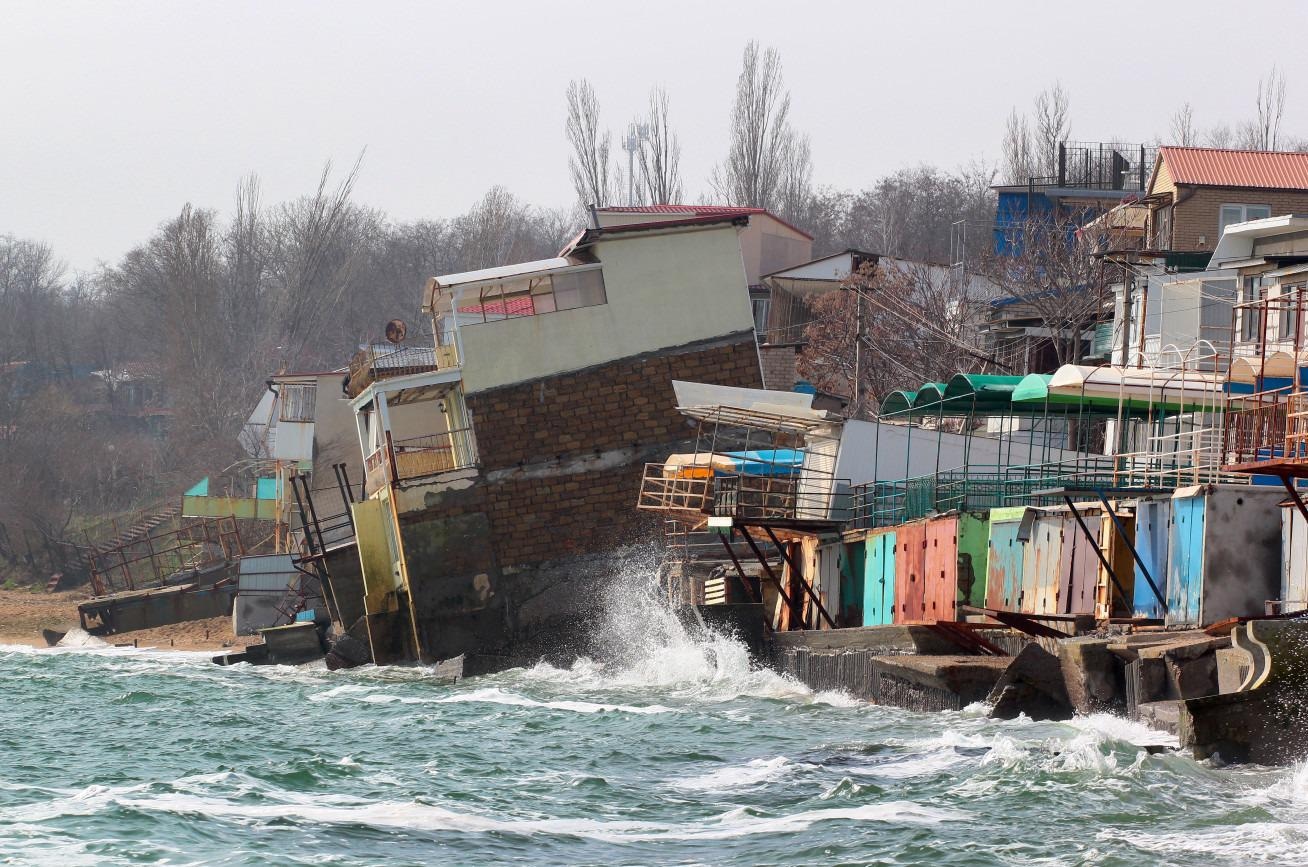Dec 21 2020
According to a new report, if climate change is not challenged sea levels may rise higher than present estimates by 2100.
 Sea level rise will cause increased coastal erosion. Image Credit: Imperial College London.
Sea level rise will cause increased coastal erosion. Image Credit: Imperial College London.
According to the authors of the latest report, interpreting the way polar ice sheets are affected by intense global heating will be significant for projecting the rise in sea levels across the next 100 years.
However, uncertainties continue to exist and present-day understanding of ice sheets indicates that the rise in sea levels under constant intense warming may be higher than the 'likely' range by 2100, as estimated by the Intergovernmental Panel on Climate Change (IPCC).
The study authors also suggested ways in which investigators could make more accurate predictions. One such way is to enhance one’s interpretation of the dynamics of ice sheets, like how they fracture and disintegrate and how they interplay with the warming oceans. The study was recently published in the One Earth journal.
Greenhouse gas emissions are still on the rise, and strong heating, of more than 4 °C by 2100, is well within the realm of the possible if emissions continue unabated. Currently, hundreds of millions of people live in regions susceptible to coastal flooding, and the likelihood of even worse flooding will significantly increase with severe sea-level rise.
Martin Siegert, Study Lead Author and Professor, Grantham Institute – Climate Change and Environment, Imperial College London
Professor Siegert continued, “The sea-level rise we have already faced has been somewhat mitigated by flood barriers and other measures, but we are unprepared for higher rates of rise that could overwhelm these measures. If we don’t do more to avert dangerous global heating, we may reach a point where we can no longer protect people.”
No Reason to Delay Action
The researchers assessed existing models of the impact of warming on ice sheets that are relied on by the IPCC’s 2019 report on sea-level rise. For the intense heating condition of over 4°C rise in temperatures by 2100, the new report provided a 'likely' range for sea-level rise of 0.61 to 1.10 m above the levels observed in 1950.
The researchers’ study demonstrated that ice sheet models lack adequate details on crucial processes that may result in a considerable mass loss under intense warming, which means the rise in sea levels above the IPCC’s 'likely' range is much more possible than below it.
Sea-level rise will be one of the most challenging issues faced by society in the coming decades. We need to recognize that we cannot stand by and wait for clarity about actual sea-level rise to begin planning for it.
John Englander, President and Founder, Rising Seas Institute
“Waiting for better confidence in predictions is not a reason to delay building a margin of safety, for example into building codes and zoning, recognising the inevitability of sea-level rise and its catastrophic implications,” added Englander, who is also the co-author of the study.
How Seas Rise
There are two main ways through which sea level can rise considerably at a universal level. All through the 20th century, sea-level rise has been governed by thermal expansion— added heat driving water molecules, expanding the capacity of the ocean water. In the 21st century, however, the second mechanism has turned out to be dominant: the introduction of water from melting glaciers and ice sheets.
Although the rise in sea level caused by thermal expansion can be projected through comparatively simple associations between the expansion and the temperature, glaciers and ice sheets react to growing temperatures in interconnected and complex ways that make it more difficult to make predictions.
Investigators looking forward to the next 100 years of climate change and its growing influence on nature, human society and the environment usually recall the earlier episodes of natural climate change for indications as to how numerous earth systems will respond.
Toward the end of the last ice age, there is sufficient proof that ice sheets reacted to rising temperatures by quickly losing mass at a speed that, sometimes, was higher than presently observed, resulting in many meters of sea-level rise for every 100 years.
This indicates that present-day projections of sea-level rise could be underestimated because the ice sheets may lose mass more quickly across the forthcoming century than predicted by the existing models, added the researchers.
Filling the Gaps in Knowledge
Therefore, to enhance both models and predictions, the authors of the study identified crucial areas of studies that are required to bridge these knowledge gaps. These areas comprise improved plotting of the ground underneath ice sheets and glaciers, collection of data at the boundary where the ocean and glaciers meet and better coupling of models of ice sheets, oceans and the atmosphere.
The network of current observations of the dynamics of ice sheets already offers investigators an extremely powerful warning signal and causes for concern, but according to the authors of the study, such enhancements may lead to an advanced 'early warning system' targeted at signals of rapid sea-level change, like increased temperatures of ocean water along the boundaries of ice sheets.
We already have a good start on an early warning system for dangerous sea-level rise, with satellites, airborne platforms, robotic devices, field investigators, and expert knowledge.
Martin Siegert, Study Lead Author and Professor, Grantham Institute – Climate Change and Environment, Imperial College London
“While this network is growing and getting stronger, it has major weaknesses at ice-sheet boundaries that require urgent action. We need to develop an array of robotic devices in key parts of Antarctica and Greenland that are most vulnerable and capable of rapid sea-level rise in the future,” Professor Siegert concluded.
Journal Reference:
Siegert, M., et al. (2020) Twenty-first century sea-level rise could exceed IPCC projections for strong-warming futures. One Earth. doi.org/10.1016/j.oneear.2020.11.002.